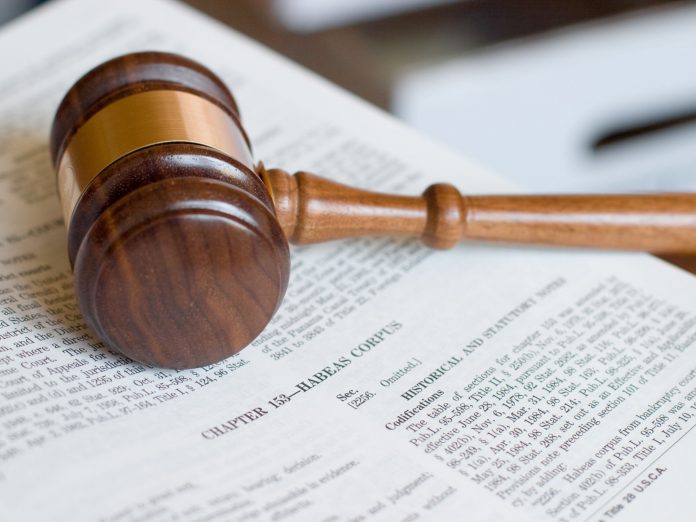The article is written by Vedant Bhardwaj Singh from Hidayatullah National Law University. The article critically analyses temporary injunctions and interlocutory orders through Order 39 of the Code Of Civil Procedure, 1908.
This article has been published by Diganth Raj Sehgal.
Table of Contents
Introduction
Rooted in the principles of goodwill, equity, good conscience and the legal maxim, “Ubi jus, ibi remedium” – where there is a right, there is a remedy – an injunction is an equitable remedy where an individual is commanded by a court – having authority over that individual – to perform or cease to perform a specific action, provided, if the court were not to intervene would cause irreparable harm to the status quo of the individuals involved in the case.
To illustrate the practicality of an injunction, it can be used to force striking workers to resume the course of their employment during the course of the civil suit between the striking trade union and the firm which employs members of the said trade union.
This article will be a discussion regarding injunctions with a special emphasis on the Order 39 of the Civil Procedure Code, 1908 which highlights the procedure to grant temporary injunctions and interlocutory orders.
Nature of Injunctions
As is the case with any legal concept, injunctions have been subjected to multiple definitions throughout the history of jurisprudence.
Joyce defined it as “an order remedial, the general purpose of which is to restrain the commission of some wrongful act of the party informed”.
Burney attempted to define the concept of injunction as, “a judicial process, by which one who has invaded or threatens to invade the rights of another is restrained from continuing or commencing such wrongful act”.
But perhaps, the definition which holistically captures the essence of injunctions is the one provided by Halsbury who claimed that “An injunction is a judicial process whereby a party in an order to refrain from doing or to do a particular act or thing”.
An injunction is characterized by three important notions which include the presence of a judicial proceeding, the relief which is granted is in the form of a restraint, and lastly, that the restrained act needs to be wrongful on the grounds of equity.
Perpetual Injunction
The other broad category of injunctions and the counterpart of temporary injunction – perpetual injunctions – as defined by Section 37 of the Specific Relief Act, 1963 is “the decree made at the hearing and upon the merits of the suit, the defendant is thereby perpetually enjoined from the assertion of a right, or from the commission of an act which would be contrary to the rights of the plaintiff”.
Temporary Injunction & its basic principles
In its essence, a temporary injunction is an interim remedy to maintain the status quo of the parties with regards to the property in dispute during the pendency of the case. The aim of temporary injunctions in the Indian law is to protect a party to the suit against injury by violation of his right for which he could not be adequately compensated in damages recoverable in the action if the uncertainty were resolved in his favor at the trial. The aforementioned aim was highlighted in the case of M/S Gujarat Pottling Co. Ltd. & Ors v. The Coca Cola Company & Ors. (1995).
Requirements for Temporary Injunctions
The case of Dalpat Kumar And Another v. Pralhad Singh And Others (1991) has settled the three main requirements for granting a temporary injunction, they are:
- Prima Facie Case
A suit consists of a seriously disputed question. The facts in those questions encourage the probability of entitlement to relief for the plaintiff or the defendant. A prima facie case does not mean that the plaintiff or the defendant come up with an irrefutable argument that will in all probability succeed in a trial. It only means that the case they build for their injunction must be meritorious enough, not to be rejected instantly.
- Irreparable Loss
If an irreparable loss were to be incurred by an individual with regards to the suit before his legal right is established in the trial, it would be a cause of grave injustice. However, it must be noted that illustrations like frustration over a loss of something with sentimental value will not be regarded as irreparable damage. On the other hand, things that by nature can be remedied will be considered to be irreparable damage if the court were to have no fair or reasonable address. Very often an injury is irreparable where it is continuous and repeated or where it is remediable at law only by a multiplicity of suits. Sometimes, the term irreparable damage refers to the difficulty of measuring the amount of damages inflicted. However, a mere difficulty in proving injury does not establish irreparable injury.
- Balance of convenience
The court needs to compare the case of parties, comparative mischief or inconvenience which is likely to sue from withholding the injunction will be greater than which is likely to arrive from granting it.
When can a Temporary Injunction be rejected
The circumstances in which a temporary injunction is granted is governed by Order 39, Rule 1 of the Code on Civil Procedure, 1908, which will be discussed later. Thus, it becomes imperative to discuss the instances when a temporary injunction can be rejected. This is highlighted in Section 41 of the Specific Relief Act, 1963.
- Restrain any person from prosecuting a judicial proceeding at the institution of the suit, in which injunction is sought, unless restraint is necessary to prevent multiplicity of proceedings.
- To restrain any person from instituting or prosecuting any proceeding in a Court not subordinate to that, from which injunction is sought.
- To restrain any person from applying to any legislative body.
- To restrain any person from instituting or prosecuting any proceeding in a criminal matter.
- To prevent the breach of a contract the performance of which could not be specifically enforced.
- To prevent on the ground of nuisance, an act of which it is not reasonably clear that it will be a nuisance.
- To prevent a continuing breach in which the plaintiff has acquiesced.
- When equally efficacious relief can certainly be obtained by any other usual mode of proceeding except in case of breach of trust.
- When the conduct of the plaintiff or his agents has been such as to disentitle him to the assistance of the court.
- When the plaintiff has no personal interest in the matter.
Rules under Order XXXIX of the Code of Civil Procedure, 1908
On Temporary Injunctions
- Order 39, Rule 1 talks about the cases in which the court may grant a temporary injunction as a statutory relief, they are:
- In the case of property dispute, if the property in question is under a risk of being wasted, damaged or alienated or wrongfully sold by an individual involved in the suit.
- If an individual threatened or displayed intention of removing or disposing off of his property with a motive to defraud his creditors. This is specific to the defendant only.
- If the plaintiff is threatened – by the defendant – to be dispossessed or injured in the context of the property dispute under question.
- If the defendant were to commit a breach of peace or contract. The aforementioned ground is also highlighted in Order 39, Rule 2 of the CPC, 1908.
- Lastly, the court may issue an injunction if it is of the opinion that it would be an act in the interest of justice.
- Order 39, Rule 2-A talks about the non-compliance of an individual with regards to an injunction, they are:
- It mandates the detainment of that individual in civil prison for not more than three months.
- Furthermore, it warrants the attachment of property of that guilty individual for not more than a year. However, if the delinquency were to continue, the property may be sold.
- In the case of Ram Prasad Singh v. Subodh Prasad Singh (1983), it was highlighted that it is not necessary for an individual to be a party to the concerned suit, to be liable under Order 39, Rule 2-A of the CPC, 1908, provided it is known that he was an agent of the defendant and violated the injunction despite being aware of the same.
- Usually, the court is required to issue a notice to the opposite party regarding the application of injunction, but through Order 39, Rule 3, the court can grant an ex-parte injunction when it is under the belief that the object of the injunction would be defeated because of delay. The Supreme Court through the case of Union of India v. Era Educational Trust (2000), laid down certain guiding principles for courts to follow while deciding upon an ex-parte injunction, they are:
- Whether the plaintiff will be a victim to irreparable mischief by the defendant?
- Whether the weight of injustice will be heavier if an ex-parte injunction is not granted?
- Whether the timing of applying for an ex-parte jurisdiction was maliciously motivated?
- The courts will also consider the general principle of balance and irreparable loss.
- Order 39, Rule 4 lays down that an injunction may be discharged, varied or set aside, if any dissatisfied party makes an appeal against it, provided that:
- The application for injunction or documents advocating the same included knowingly false or misleading statements and the injunction was granted without listening to the other party. Thus, the court will vacate the injunction. However, it can also stick with the injunction if it considers – the reason is to be recorded – the same not be necessary in the discourse of injustice.
- Furthermore, the court may also set aside the injunction if, due to a change of circumstances, the party against whom the injunction is granted, has suffered unnecessary hardships.
- Order 39, Rule 5 makes an important point that, if an injunction is granted against a corporation or a firm, the authority of the is not limited to the corporation as an entity alone, members and officers of the corporation whose personal action it seeks to restrain are also included under its ambit.
On Interlocutory Orders
Before we analyze the remaining rules in Order 39, we must understand the concept of interlocutory orders. Interlocutory orders are the extension of which temporary injunctions are a part of. They are the final hammer for the subplots that are not related to the core of a pending suit. They settle those subordinate issues which may be necessary for deciding the outcome of the case – intangibly – and need a swift decision because of the time-sensitivity of those issues. These orders exist to make sure that the involved parties’ interests are not harmed during the due process of justice.
Achieving justice is the main aim of the Indian judiciary but achieving their aim in an equitable process is also important. The latter is governed by interlocutory orders.
Interlocutory orders may take on many shapes and sizes including, but not limited to, notice to conduct search and seizure, temporary injunction, payment into court, etc.
However, in the case of the Sub Committee of Judicial Accountability v. Union of India (1991), the Supreme Court noted that an interlocutory order must not be passed if it were to have any inference of pre-judging some important and delicate issue related to the main matter.
Reading Rules 6-10 of the Code on Civil Procedure 1908, will give us a proper understanding of the weight of interlocutory orders in the Indian legal system.
- Order 39, Rule 6 talks about the power to hold an interim sale.The court may order the sale of any movable property being the subject matter of the suit. Furthermore, these movable properties also include such things which are subject to natural delay and will be rendered futile if not sold swiftly. For example, the court may order the sale of fruits and vegetables if they are a matter of suit as they cannot be stored indefinitely and are perishable goods.
- Order 39, Rule 7 talks about the detention or inspection of the subject matter of the suit. Essentially, the court may order any individual to retain, preserve or inspect the property of dispute. The court may pass such an order specific observations or experiments upon the disputed land if it were to deem it necessary for the purpose of obtaining complete information.
- Order 39, Rule 8 brings closure to rule 6 and 7 on grounds of equity. It claims that an order under rule 6 and 7 will only be passed if:
- The applicant applies for the order after the institution of the suit.
- The applicant provides notice of the application to the parties involved in the suit.
- The other parties of the suit have been given a fair chance to argue against the interim order.
- However, the rule is subject to the exception that if the hearing would cause delay leading to the loss of the objective of the suit.
- Order 39, Rule 9 talks in relation to an instance if land paying revenue is the subject matter of the suit. It speaks about if an individual neglects paying his government revenue or the rent to his proprietor, then the court may order the sale of the land or tenure, as the case may be, to any party interested in buying that said land or tenure. The proceeds from the sale can be used to compensate the defaults in the payment of the rent. Furthermore, the party who was interested in buying the property, by the decree of the court, can be compensated by the defaulter.
- Order 39, Rule 10 talks about dispute over money or any item which is capable of delivery. If in the dispute, a party claims to have the trusteeship of the disputed item, then the court may order that item to be deposited in the able hands of the court until the dispute is resolved.
Conclusion
In the general understanding of injunctions in Indian jurisprudence and as is the case presented here, the reader must have noticed the intangible presence of the Specific Reliefs Act,1963 while discussing Order 39 of the Code on Civil Procedure, 1908. This is because the essence of injunctions is captured when the two documents are interpreted together. Their symphony is what brings out the equity, good conscience, and goodwill of injunctions.
Thus, the rationale behind the provision of Order 39 of the Code of Civil Procedure, as laid down by Hon’ble Supreme Court in the case of M. Gurudas and Ors. v. Rasaranjan and Ors. (2006) can be summarized as “While considering an application for injunction, the Court would pass an order thereupon having regard to prima facie, balance of convenience and irreparable injury“.
References
- https://districts.ecourts.gov.in/sites/default/files/1ARTICLE%20ON%20LAW%20RELATING%20TO%20INJUNCTIONS%20by%20PARVATAPU%20RAVI%20Prl%20jcj%20Godavarikhani.pdf
- https://law.jrank.org/pages/7647/Injunction-Types-Injunction.html
- https://blog.ipleaders.in/types-injunctions-indian-law/
- https://blog.ipleaders.in/temporary-injunctions-india/
LawSikho has created a telegram group for exchanging legal knowledge, referrals, and various opportunities. You can click on this link and join: https://t.me/joinchat/L9vr7LmS9pJjYTQ9
Follow us on Instagram and subscribe to our YouTube channel for more amazing legal content.
 Serato DJ Crack 2025Serato DJ PRO Crack
Serato DJ Crack 2025Serato DJ PRO Crack











 Allow notifications
Allow notifications


